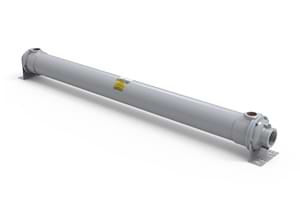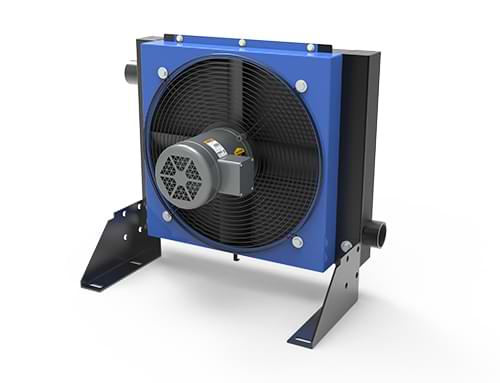Aftercoolers for Sintered Bead Blasting
It involves propelling small, spherical beads—typically made from materials like glass, ceramic, or metal—at a surface under high pressure. These beads are "sintered," meaning they’ve been heat-treated to fuse particles into a solid, uniform structure, enhancing their durability and consistency. The process cleans, smooths, or textures surfaces without causing excessive material removal, making it ideal for delicate or precision components. But how do aftercoolers tie into this process? Let’s explore the mechanics of sintered bead blasting and the critical role aftercoolers play in optimizing it.
Water Cooled Aftercoolers
Compressor Cooling
- Fixed or Removable Tube Bundles
- Material Options Available
- Standard and Custom Options

Air Cooled Aftercoolers
Compressor Cooling
- Use Ambient Air to Cool
- Variety of Motor Options
- Standard Pressures of Up To 250 psi

What is Sintered Bead Blasting?
Sintered bead blasting is a subset of abrasive blasting, distinguished by its use of specially engineered beads. Unlike traditional sandblasting, which uses irregular, sharp abrasives, sintered beads are spherical and uniform, delivering a gentler, more controlled impact. This makes the technique suitable for applications requiring a polished finish, deburring, or stress relief without compromising the integrity of the workpiece.
Key Benefits of Sintered Bead Blasting
- Uniform Finish: The spherical beads create a consistent surface texture, ideal for aesthetic or functional purposes.
- Minimal Material Removal: Unlike aggressive abrasives, sintered beads preserve the substrate’s dimensions.
- Versatility: Works on metals, plastics, and composites, catering to diverse industries.
- Reusability: Sintered beads are durable and can often be recycled, reducing operational costs.
The process relies heavily on compressed air to propel the beads, which introduces heat and moisture into the system—factors that can degrade performance if not managed properly. This is where aftercoolers come into play.
The Role of Aftercoolers in Sintered Bead Blasting
Aftercoolers are heat exchangers used in compressed air systems to cool air after it exits the compressor and before it reaches the blasting equipment. Compressors generate significant heat and moisture as they pressurize air, and without proper cooling, this hot, humid air can negatively impact the bead blasting process. Aftercoolers address these issues by reducing the air temperature and removing excess water vapor, ensuring optimal conditions for blasting.
How Aftercoolers Enhance the Process
- Moisture Control: Hot compressed air carries water vapor, which can condense and mix with the beads, causing clumping or corrosion of equipment. Aftercoolers cool the air below its dew point, allowing moisture to condense and be drained away.
- Improved Efficiency: Dry, cool air ensures the beads flow smoothly through the blasting system, preventing blockages and maintaining consistent pressure.
- Equipment Longevity: Excess moisture and heat can wear down nozzles, hoses, and other components. Aftercoolers mitigate this, extending the lifespan of the system.
- Surface Quality: Wet air can leave residues or uneven finishes on the workpiece. Aftercoolers help maintain the precision and cleanliness that sintered bead blasting promises.
Integrating Aftercoolers with Sintered Bead Blasting
In a typical setup, the compressor feeds air into an aftercooler, which is often paired with a separator to remove condensed water and oil. The cooled, dry air then flows into the blasting unit, where it propels the sintered beads. For high-precision tasks—like preparing aerospace parts or medical implants—the aftercooler’s role is non-negotiable. Without it, moisture could compromise the bead integrity or the workpiece, leading to costly rework or rejects.


